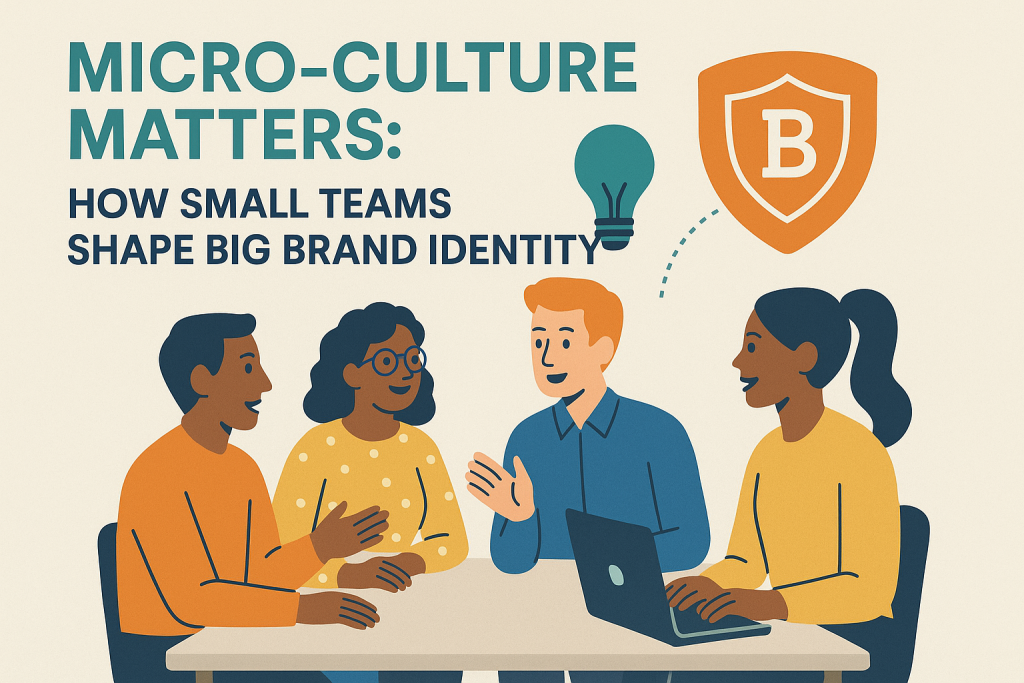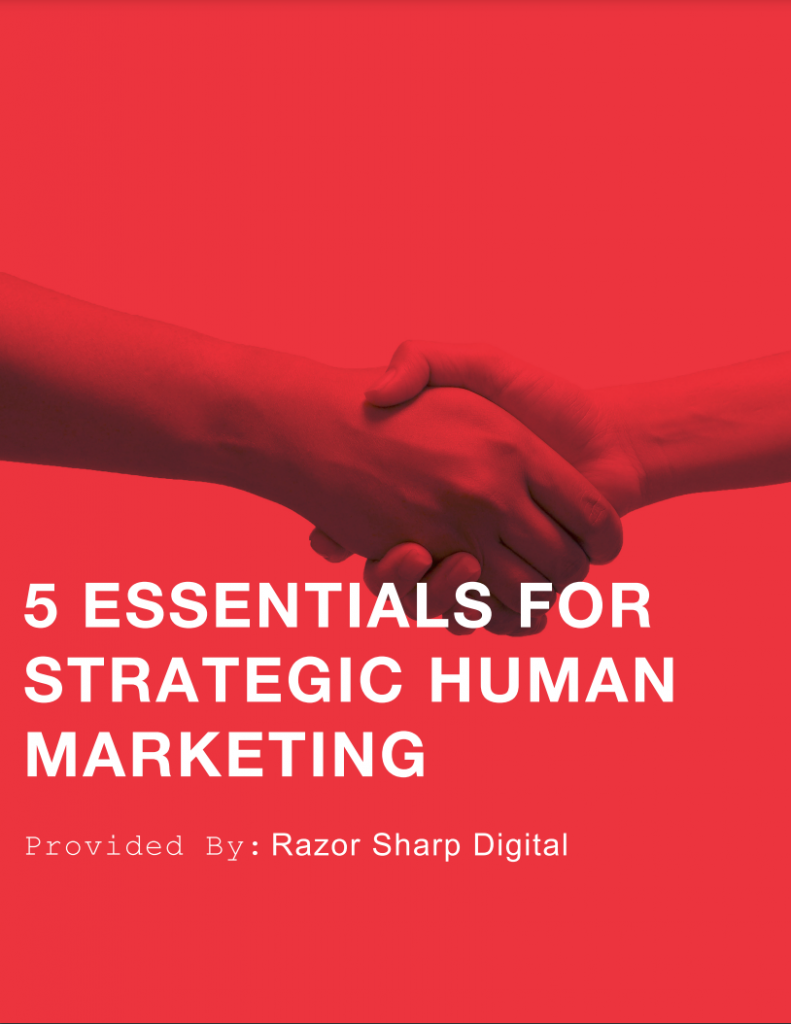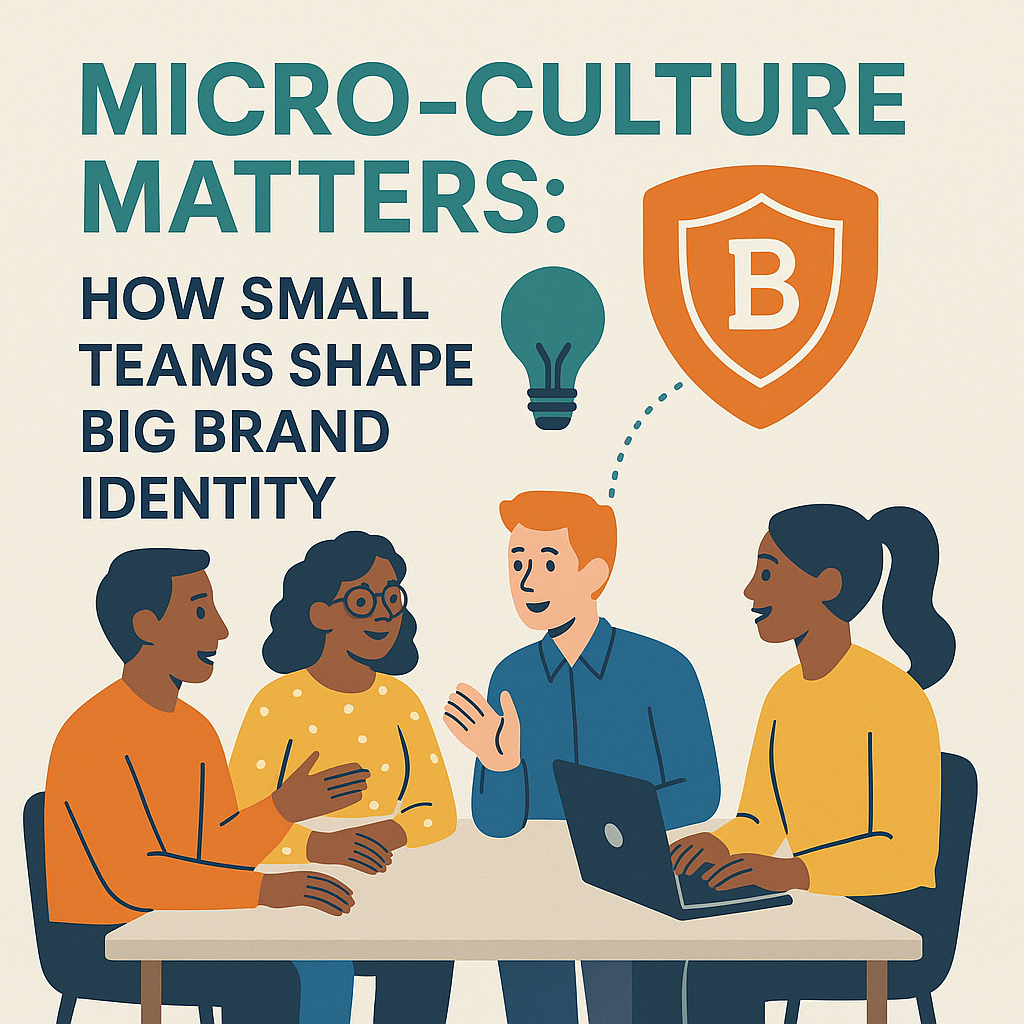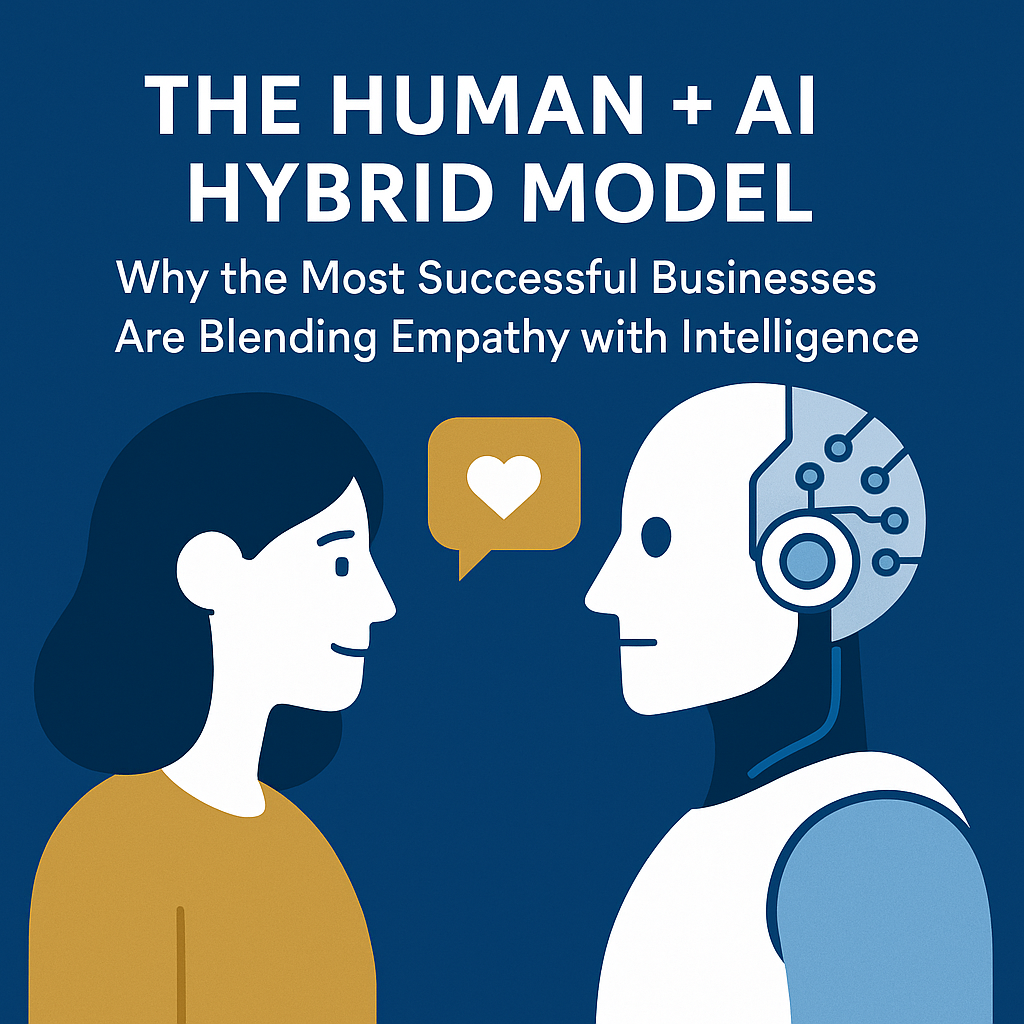This article explores why micro-culture matters, how it influences brand identity, the potential risks and how business leaders and marketers can harness this dynamic to build stronger, more authentic brands.
1. Defining Micro-Culture in the Context of Teams and Brands
At the heart of every organization is the concept of culture: the shared norms, values, behaviours and rituals that define how things get done. Wikipedia+2Deloitte+2 But within that larger culture are smaller, distinct sub-cultures—or micro-cultures—that form within teams, workgroups or functions. These are shaped by the people, the work, the leadership and the interactions specific to that team. Strategy People Culture Consulting+2Global Leadership Network+2
For our purposes:
A team micro-culture is the “personality” of a small group within a larger brand or business: how they work, how they relate, what rituals they adopt, how they talk about their work, their norms, etc. FocusU+1
Brand identity refers to the visible elements of a brand (logos, colours, design, messaging) and the intangible—values, voice, experience, tone of culture.
When a brand claims a certain identity externally—e.g., “authentic”, “innovative”, “human-centric”—its internal small-team micro-cultures must reflect, live and breathe that identity for it to truly hold. If small teams deviate or contradict the brand promise, the disconnect will show up (in employee experience, customer experience, reputation). Deloitte+1
2. Why Small Teams Have Outsized Influence on Brand Identity
There are several reasons why micro-cultures (small teams) punch above their weight when it comes to brand identity.
2.1 Proximity to Action and Customers
Small teams are where decisions get made, where customer interactions happen, where lived culture is experienced. If a design team, customer service team or product team embodies the brand’s values (or chooses to ignore them), that shapes what the customer sees and what the brand feels like.
Because micro-cultures operate closer to the “edge”—the work, the customer, the product—they are often more visible to customers (directly or indirectly) and thus directly shape the brand identity.
2.2 Team Norms Become Brand Experience
As one article notes: “Company culture is built around our teams—not the company. As the team culture goes, so goes the company culture.” Medium
In other words, what the small team does—how it behaves, how it treats each other, how it treats mistakes, how it innovates—is what customers and employees ultimately experience.
If one team is highly collaborative, agile, playful and customer-obsessed, and that aligns with the brand, it becomes a living proof of that brand identity. Conversely, if one team is siloed, resistant to change or lacking psychological safety, the brand identity claim rings hollow.
2.3 Micro-cultures Scale through Replication
When a brand grows, spreads, opens new locations or teams, the micro-cultures replicate. Each new team creates its own micro-culture—whether intentionally or by default. The cumulative effect of many small team cultures determines whether the brand identity is consistent or fractured.
According to research: organizations that embrace micro-cultures are 1.8 times more likely to achieve positive human outcomes and 1.6 times more likely to achieve desired business outcomes. Global Leadership Network+1
2.4 Micro-cultures as Identity Anchors for Employees
For employees, the small-team experience is often more meaningful than the broader brand message. One study found that a third of employees say the unique culture of their immediate workgroup matters most to their experience at work. Deloitte
If you want your brand identity to be embraced by your people, you must start at the micro-team level—they will live it, carry it, and extend it into the marketplace.
3. How Micro-Culture Shapes Brand Identity: Mechanisms and Examples
Understanding how small team cultures translate into brand identity helps unlock the “how to” of leveraging it.
3.1 Rituals, Symbols and Behaviour
Every team develops its own rituals: how meetings start, how wins are celebrated, how mistakes are handled, how people communicate. These routines often become embedded in the brand experience.
For example: if a marketing team always ends with a “what learned” round-table, the brand becomes one of continuous learning—even if the brand identity claims “curiosity”, it becomes real. If another team never reflects or ignores mistakes, the brand identity will drift toward execution and compliance, not innovation.
Teams also adopt symbols: shared language, inside jokes, branded swag, team-specific slack channels, or “daily stand-ups”. These micro rituals shape internal branding and spill out into customer interfaces (tone of voice, responsiveness, energy). Razor Sharp Digital
3.2 Alignment (or Misalignment) with Brand’s Macro Identity
If a team’s micro-culture aligns with the brand’s macro identity, it amplifies it—adds authenticity and coherence. If it diverges, it fragments the brand, causes dissonance and can reduce trust.
For instance: one team may embody “innovative, fail-fast, experiment” while another team may embody “risk-averse, process-first, perfection-driven”. If the overall brand markets itself as “bold, agile, customer first”, you have conflicting micro-cultures that muddle the brand. Research warns: misalignment can cause “us versus them” thinking, siloing and internal culture drift. Deloitte+1
3.3 Micro-cultures as Incubators of Brand Voice
Brand voice is more than messaging—it is how people within the brand speak, behave and engage. Small teams are where voice becomes real.
If the support team uses empathetic language, answer promptly, own outcomes—that becomes part of the brand’s voice externally. If the product team prototypes boldly, shares ideas openly, shows transparency—that becomes part of the brand persona of innovation and openness.
Hence, the micro-culture shapes how the brand communicates and how it is perceived.
3.4 Micro-culture Drives Internal Belief and Ownership
Brand identity is not only outward-facing; it lives inside the organization. It cannot merely be a slogan or logo—it must be believed internally. Small teams are where belief becomes lived reality.
When a small team feels like their team—has autonomy, owns the brand identity, participates in shaping it—they are more likely to reflect it outward. That gives the brand identity integrity.
If teams feel disconnected, the brand identity becomes top-down, disconnected, and less authentic.
4. Why Micro-Culture Matters in the Era of Hybrid/Distributed Teams
The rise of remote and hybrid work has amplified the importance of micro-culture. According to a study from Deloitte, applying a “one-size-fits-all” culture across diverse work-forces is no longer effective; micro-cultures are becoming how meaningful connection happens. Deloitte+1
When people are dispersed, each team tends to form its own rituals, norms and ways of interacting. That means micro-cultures emerge naturally, whether by design or default.
In such a context:
Teams with strong, aligned micro-cultures can maintain brand identity coherence despite physical distance.
Teams with weak or unfiltered micro-cultures may drift, fragment and lose alignment with the brand.
Hybrid/distributed environments therefore increase both the opportunity and the risk of micro-culture: opportunity for teams to create unique, energized identity; risk of fragmentation and brand dilution.
5. Risks and Pitfalls: When Micro-Culture Goes Sideways
While micro-culture offers many benefits, it also carries significant risks. Recognizing the pitfalls helps leaders steer wisely.
5.1 Silos and Fragmentation
Teams may develop micro-cultures so distinct that they start acting in isolation, ignoring cross-team collaboration, forming “us vs them” mentalities. This can harm brand consistency and internal cohesion. Global Leadership Network+1
For example: a creative team continually celebrates risk and failure; the operations team expects perfection and punishment for errors. Without alignment, tension builds—and the brand identity in those areas becomes inconsistent.
5.2 Misalignment with Core Brand Values
If a micro-culture drifts in a direction that doesn’t align with the brand’s guiding values, the brand identity becomes hollow. Study after study emphasizes that micro-cultures must reflect the wider brand values, not override them. Global Leadership Network+1
Example: If a brand claims “customer-first, empathy driven” but a specific team fosters transactional, indifferent interactions, the brand narrative collapses.
5.3 Newcomer Exclusion & Lack of Flexibility
When micro-cultures become too rigid—“this is how we do things here”, rituals, norms—they risk excluding people who don’t fit the mold. That stifles diversity of thought, innovation, and may even foster toxicity. FocusU+1
From a brand perspective, this matters: a brand promoting openness, diversity or inclusion will fall short if micro-cultures inside don’t live that.
5.4 Identity Confusion for Customers or Employees
If different teams within a brand display widely varied micro-cultures, customers or employees may not know what the brand really stands for. The identity becomes fuzzy, trust suffers and competitive differentiation is lost.
6. How to Intentionally Harness Micro-Culture to Shape Big Brand Identity
Given both the power and the risk, how do brand leaders, HR, culture teams and marketers intentionally harness micro-cultures so that small teams strengthen the brand identity rather than undermine it? Here are key strategies.
6.1 Define the Brand’s Core Cultural Framework
Before diving into teams, clarify what your brand stands for at the highest level: values, behaviours, tone, purpose. These are the non-negotiables.
Micro-cultures should align with these core elements, but be allowed to express them in team-specific ways. This echoes the idea of “aligning micro-cultures with organisational values”. Global Leadership Network
For example: if your brand value is “innovation”, your tech team might express this through hack-weeks; your customer success team might express it through lightning-response workflows.
6.2 Empower Small Teams to Define Their Rituals & Norms
Give teams permission to craft their own ways of working that reflect the brand values—but are relevant to their work and people.
Guidelines:
Make sure they understand the brand’s macro identity and core values.
Encourage them to co-create team rituals, behaviours and norms that align with that.
Recognize and celebrate the unique flavour each team brings (without breaking alignment).
This fosters ownership, authenticity and helps micro-culture become a genuine differentiator.
6.3 Monitor & Connect Micro-Cultures Across the Organization
Don’t treat micro-cultures as entirely independent.
Provide touchpoints for cross-team interaction so that micro-cultures don’t drift apart.
Use tools (surveys, collaboration platforms, sentiment analysis) to monitor how teams are behaving, how culture is evolving. Deloitte points to technology enabling “visibility into ways of working” across teams. Deloitte
Facilitate sharing of best practices among teams: team A might have a standout ritual for celebrating small wins; team B might benefit.
Encourage cross-pollination so brand identity remains coherent.
6.4 Leadership Role: From Top-Down to Networked
Leaders must shift from trying to dictate culture to enable culture.
They should:
Model the brand’s values and behaviours themselves.
Coach team leads in shaping their micro-culture.
Recognize micro-culture as a strategic asset—not something to suppress.
Address misalignment quickly. According to research, the immediate team culture often has stronger impact on motivation and learning than the broader corporate culture. Strategy People Culture Consulting
Leaders should act as networked stewards, connecting vision, teams and brand identity.
6.5 Embed Micro-Culture into Brand Storytelling and External Identity
Don’t keep micro-culture hidden behind the scenes—it can be an asset for your brand story.
Highlight team rituals, showcase “how we work” segments in marketing or recruiting.
Align external messaging with internal team-stories: making the culture real.
Use micro-culture as proof point for your brand identity. If your brand says “we are human-centric”, show how the customer service team lives this in micro-culture.
This internal-external coherence strengthens brand authenticity.
6.6 Iterate and Evolve
Micro-cultures are not static—they shift as teams change, as work evolves, as people join and leave. So your process must include:
Regular reflections: Do team norms still align with brand values? Are there behaviours that have drifted? Global Leadership Network
Adjustments and resets: When teams merge, spin out, or change scope, re-align micro-culture.
Celebrate evolution: A micro-culture that evolves gracefully is a sign of a living brand—not a stagnant one.
7. Case Illustrations: When Micro-Culture Drives Brand Identity
Here are two illustrative scenarios (brand abstracted) to show how micro-culture impacts brand identity.
7.1 Case A: TechStart – Innovation Brand
Brand Identity: “We are bold, experimental, future-focused.”
Team Micro-Culture:
Engineering team holds monthly “fail-fast” demo nights—they invite non-tech people.
Product team rotates “idea owner” roles to build voice ownership.
Customer success team has daily “what surprised me today” check-ins.
Effect: The brand narrative of “innovation” is lived. Communication reflects creative risk-taking; customers sense agility; recruiting attracts people who want to be part of something bold.
7.2 Case B: ServiceCo – Human-Centric Brand
Brand Identity: “We exist to care deeply for people—employees and customers.”
Team Micro-Culture:
Customer support team starts each morning with “win/wound” share (what worked / what hurt).
A field operations team ends each week with a “shout-out board” where team members name someone who embodied ‘care’.
Marketing team writes a short “human story” each month—real people, real outcomes—shared in internal slack and social feeds.
Effect: The brand identity of empathy and human-centric service becomes tangible. Employees feel valued; customers experience warmth; the brand “feels like people first”.
These examples show how micro-culture can translate brand identity from a statement on a wall into lived behaviour inside small teams—and then into customer experience.
8. Bringing It Into Your Business: Practical Steps & Checklist
If you’re a brand, marketing leader, culture owner or team lead looking to harness micro-culture to shape brand identity, here is a pragmatic checklist:
Clarify brand identity and core cultural values.
Write down 3-5 core values, behaviours and identity statements.
Make sure they are clear, actionable and applicable across teams.
Map your team landscape.
Identify key teams (e.g., product, marketing, customer service, operations).
For each team, observe current micro-culture: rituals, norms, behaviours, language.
Assess alignment.
Co-create team micro-cultures.
With each team lead, run a workshop: “How can our micro-culture express the brand values in a way that fits our team?”
Define team rituals, norms, communication style, recognition.
Encourage autonomy but within the brand’s framework.
Enable cross-team connection.
Create opportunities for teams to share what they’re doing: rituals, successes, learnings.
Use platforms (Slack, internal newsletters, town halls) to highlight team culture stories.
Monitor culture health.
Regularly survey teams: Do they feel their culture aligns with the brand?
Use sentiment tools, peer feedback, culture audits.
Use data to spot micro-cultures drifting or becoming siloed.
Leverage micro-culture externally.
Share team culture stories in marketing, recruitment, brand communication.
Make team rituals visible to customers, prospects and new hires to reinforce identity.
Iterate and evolve.
At regular intervals (quarterly, bi-annual) revisit team micro-cultures.
Ask: Are these still serving our brand identity? Are they inclusive? Do they foster authenticity?
Adjust, reset if needed.
9. The Long-Term Payoff: Brand Strength, Employee Engagement, Growth
When small teams are aligned, empowered, and intentional about their micro-culture, the brand reaps multiple benefits:
Stronger brand consistency: Across teams, across geographies, across functions, the identity is lived and visible.
Greater authenticity: The brand isn’t just “what we say”—it’s “what we do”, team by team.
Higher employee engagement: When teams have ownership of their culture and connection to the brand, morale, creativity and retention improve.
Better customer experience: Customers sense a unified culture across touchpoints, making the brand more reliable, coherent and credible.
Faster adaptability & innovation: Team micro-cultures that are agile and aligned help the brand respond to change, capture opportunities and evolve.
Sustainable growth: As new teams, new locations or new functions are added, the brand identity scales through team culture—not just top-down mandates but embedded ground-up practice.
10. Conclusion: Think Small, Build Big
In the era of remote teams, distributed workplaces, and rapid change, brand identity cannot rely solely on top-level declarations or big campaigns. It lives inside the smaller units—the teams—where culture is shaped every day. Micro-culture matters.
By intentionally nurturing small-team cultures that align with and amplify your brand identity, you create the organic, lived expression of your brand. The big brand identity isn’t just what you say—it’s what your teams do, how they behave, how they feel.
So the next time you review your brand strategy or culture plan: don’t just think broad. Think small. The micro-cultures inside your teams are the real engines that propel your brand identity forward. When you get the small right, you build the big strong.










